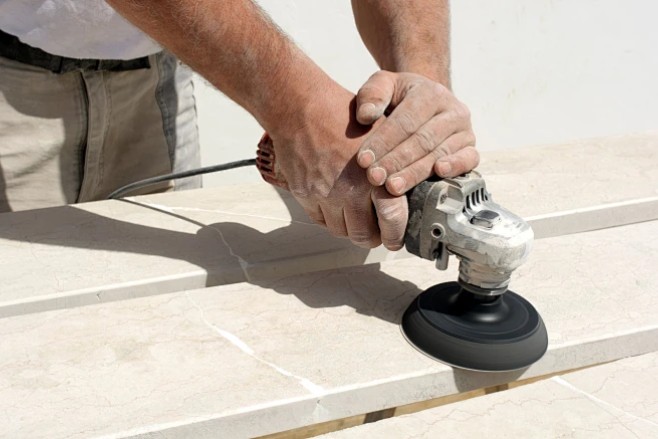Grinding and polishing are two common surface preparation techniques used in a variety of industries such as construction, manufacturing, and metalworking. While both processes are designed to improve the surface quality of a material, there are significant differences in their definitions, processes, and results. This article will explore the key differences between grinding and polishing to help you understand when to use each technique.
Definition of Grinding and Polishing
Grinding
Grinding is a mechanical process that uses manual or mechanical equipment to remove material from the surface of a workpiece. The main purpose of grinding is to remove one or more layers of material to obtain a smoother surface. The process is often used to reshape, flatten or prepare a surface for subsequent processing.
Polishing
Polishing, on the other hand, is an ultra-fine grinding technique that uses finer abrasives to enhance the surface finish of a material. The purpose of polishing is to make the surface smoother and brighter by removing minor imperfections and achieving a high gloss finish. Polishing is usually the last step in surface treatment to create a refined appearance.
Grinding and Polishing Process
Grinding process
The grinding process involves multiple steps and tools, including:
Tools used: Grinding typically uses coarse grinding wheels, sanding belts, sanding discs, and abrasive fluids. These tools are designed to remove material quickly and efficiently.
Selection of abrasive: Different abrasives are selected according to the material being processed and the desired surface effect. Coarse abrasives are used for initial grinding, while fine abrasives are used in subsequent grinding stages.
Processing method: The grinding process will vary depending on the grinding frequency and material thickness. To achieve a specific result, surface grinding, cylindrical grinding and centerless grinding may be used.
Polishing process
The polishing process is more specialized and involves:
Tools: Polishing requires the use of very fine abrasives such as aluminum oxide or tungsten oxide. These abrasives are usually applied using a polishing pad or cloth.
Fine abrasive: Polishing uses much finer abrasives than grinding. This allows polishing to remove minute surface imperfections without changing the overall shape of the material.
Repeated application: Polishing is an extremely fine grinding process that is repeated over and over again on a specific area. This repetitive operation helps to remove surface irregularities and achieve the desired surface roughness and gloss.
Tool
Grinding tools
Different treatments require different tools. Commonly used abrasive tools include:
Grinding wheel: A coarse wheel designed for removing heavy materials.
Mechanical grinder: A machine that automates the grinding process to increase efficiency.
Handheld sandpaper: For manual sanding in smaller or more intricate areas.
Liquid grinder: A tool that uses abrasive liquid to grind a surface.
Polishing tools
Polishing requires specialized tools, including:
Fine grinding wheel: designed to achieve a smooth finish on the surface.
Polishing Pad: Soft pad used with fine abrasives to enhance the shine of a surface.
Mechanized grinding machine: A machine that can perform polishing tasks automatically.
Manual Polisher: A handheld device used for detailed polishing work.
Main Differences
1. Purpose: Grinding focuses primarily on material removal and surface preparation, while polishing aims to enhance the surface finish and achieve a high gloss.
2. Abrasive size: Grinding uses coarser abrasives to remove material, while polishing uses finer abrasives to refine the surface.
3. Tools and equipment: Tools used for grinding are generally stronger and designed to remove large amounts of material, while polishing tools are gentler and designed to achieve a smooth surface.
4. Surface finish: Grinding creates a smoother surface but may leave visible scratches, while polishing produces a high-gloss surface with minimal blemishes.
5. Application: Grinding is usually used in the initial stages of surface preparation, while polishing is usually the final step to achieve a refined appearance.
In Conclusion
In summary, grinding and polishing are two distinct processes that play different roles in surface preparation. Grinding focuses on material removal and surface preparation, while polishing aims to achieve a smooth, shiny surface. Understanding the differences between these two techniques is essential to choosing the right method for your specific application to ensure the best results for your project. Whether you are working with concrete, metal, or stone, knowing when to grind and when to polish will help you achieve the desired surface quality and appearance.
Post time: Jul-18-2025

